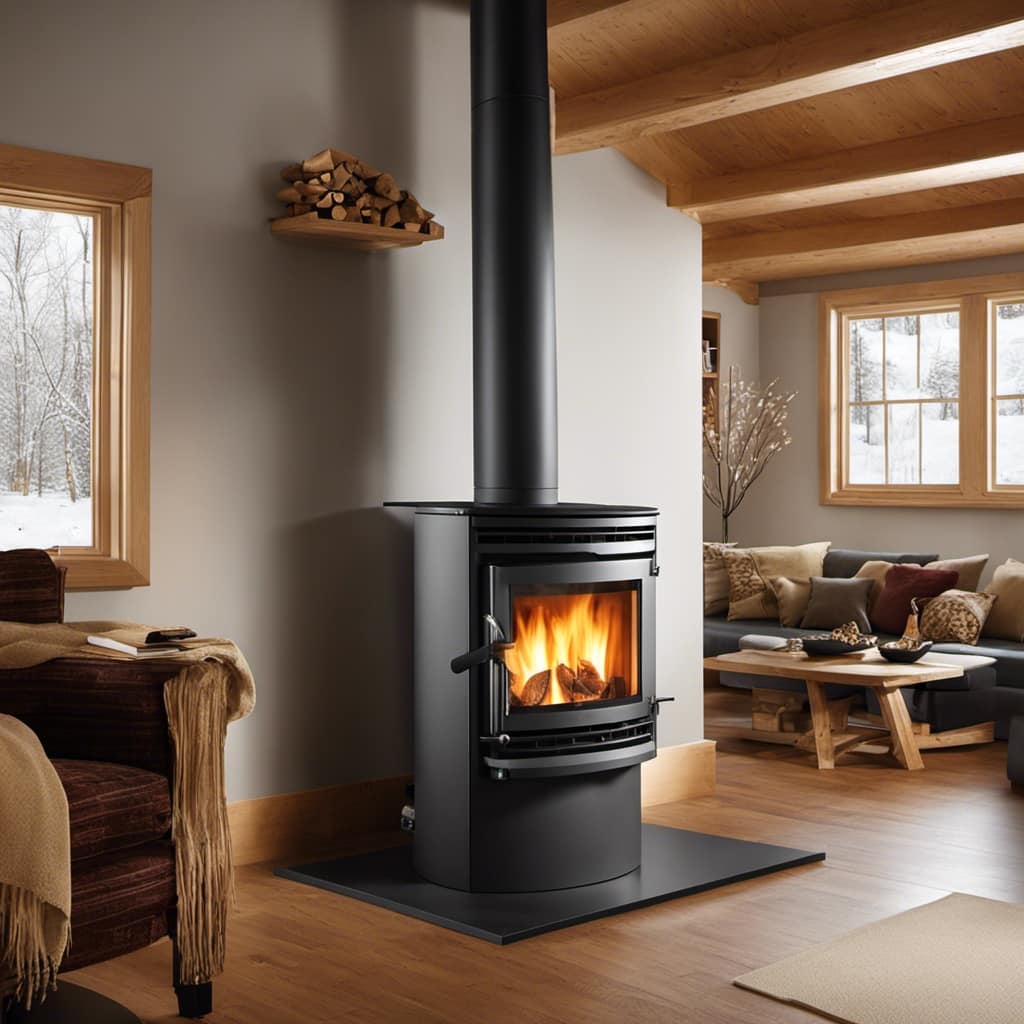
I have a wood stove that is definitely showing its age. However, by putting in some careful effort and acquiring the necessary knowledge, I have learned how to restore its appearance.
In this article, I’ll show you the step-by-step process of polishing a wood stove. From assessing its condition to applying the polish, I’ve got you covered.
So, grab your supplies and let’s get started on transforming your dull wood stove into a gleaming centerpiece.
Key Takeaways
- Evaluate the condition of the wood stove, paying attention to rust and dirt buildup.
- Choose a high-quality, non-toxic, non-flammable, and environmentally friendly polish.
- Prepare the wood stove for polishing by removing loose rust flakes and applying a rust remover solution.
- Apply the polish using a soft cloth, working in small sections for even coverage.
Assessing the Condition of Your Wood Stove
I’m inspecting my wood stove to see if it needs any polishing or repairs.
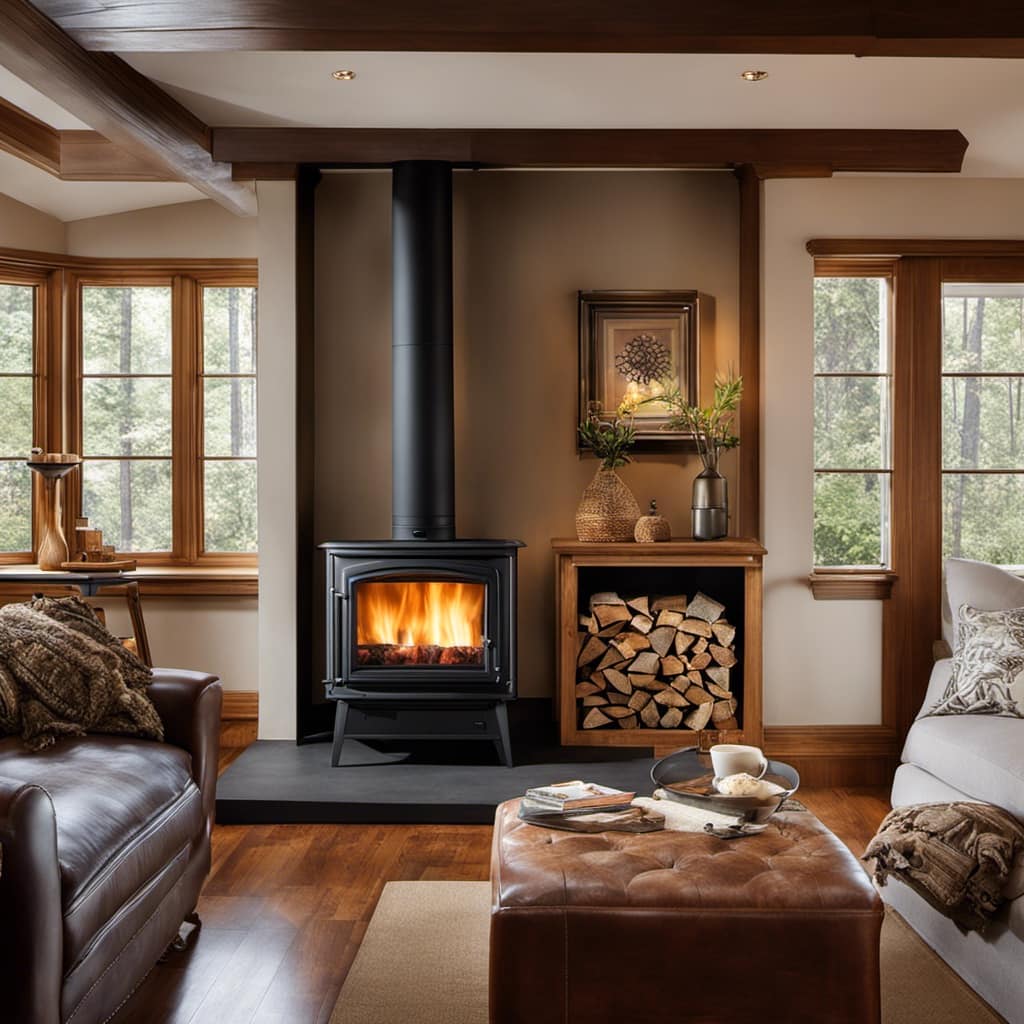
The first step in assessing the condition of your wood stove is evaluating rust. Rust can weaken the metal and compromise the stove’s performance. I carefully examine all surfaces, paying close attention to areas prone to rust, such as joints and corners. If I find any rust, I use a wire brush to remove it.
Next, I focus on removing dirt. Over time, dirt can build up on the surface of the stove, hindering its efficiency. I use a soft brush or cloth to gently scrub away the dirt, making sure to reach all the nooks and crannies.
This thorough evaluation ensures that my wood stove is ready for polishing and any necessary repairs.
Gathering the Necessary Supplies
To get started, I’ve gathered all the supplies I need for polishing my wood stove. Here’s a list of the essential items:
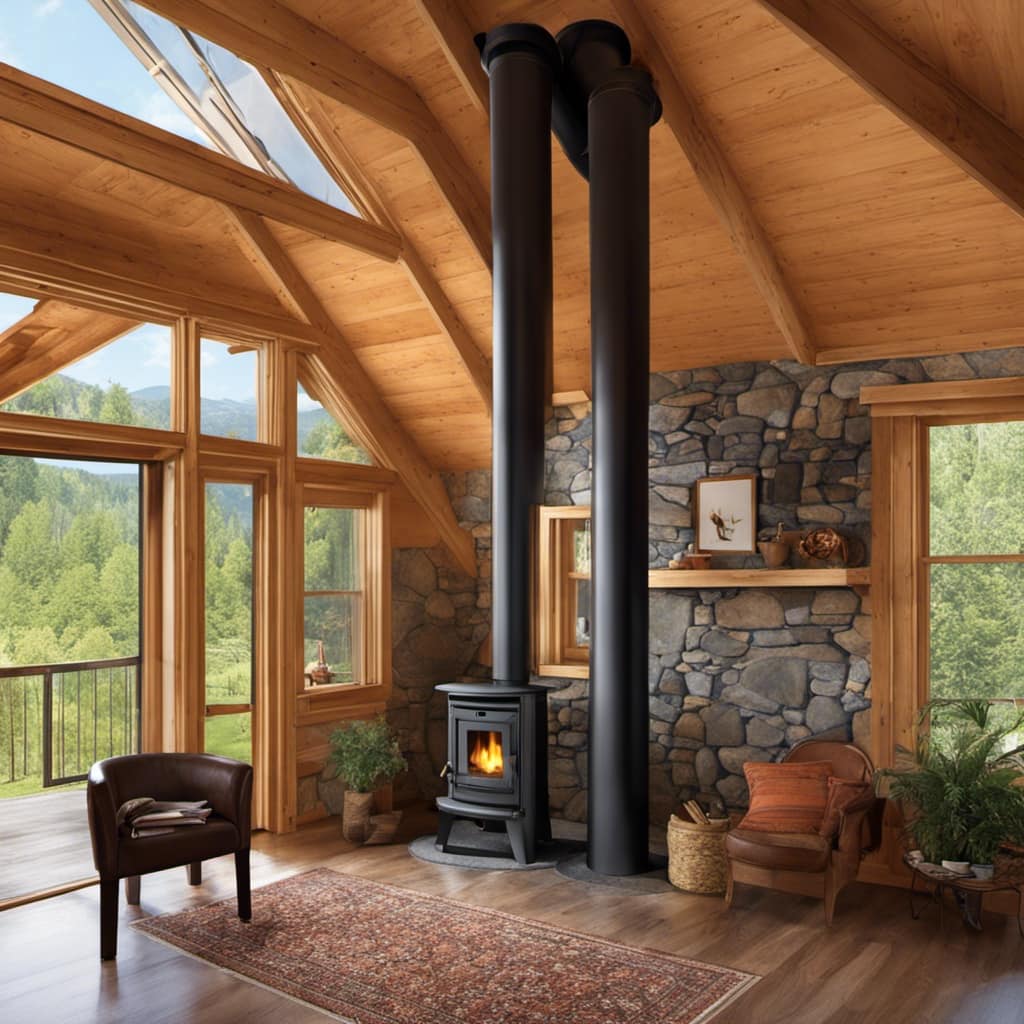
-
Choosing the right polish: It’s crucial to select a polish specifically designed for wood stoves. Look for a high-quality product that’s non-toxic, non-flammable, and environmentally friendly. Avoid using abrasive cleaners or harsh chemicals that could damage the surface of your stove.
-
Cleaning the stove surface: Before applying the polish, it’s important to thoroughly clean the stove surface. Use a soft cloth or sponge and a mild detergent to remove any dirt, soot, or grime. Make sure to dry the surface completely before proceeding with the polishing process.
Preparing the Wood Stove for Polishing
Before preparing for polishing, I need to ensure that the stove surface is clean and dry.
To prepare the wood stove for painting, it’s crucial to remove any rust that may be present. Rust not only affects the appearance of the stove but can also weaken its structure over time.
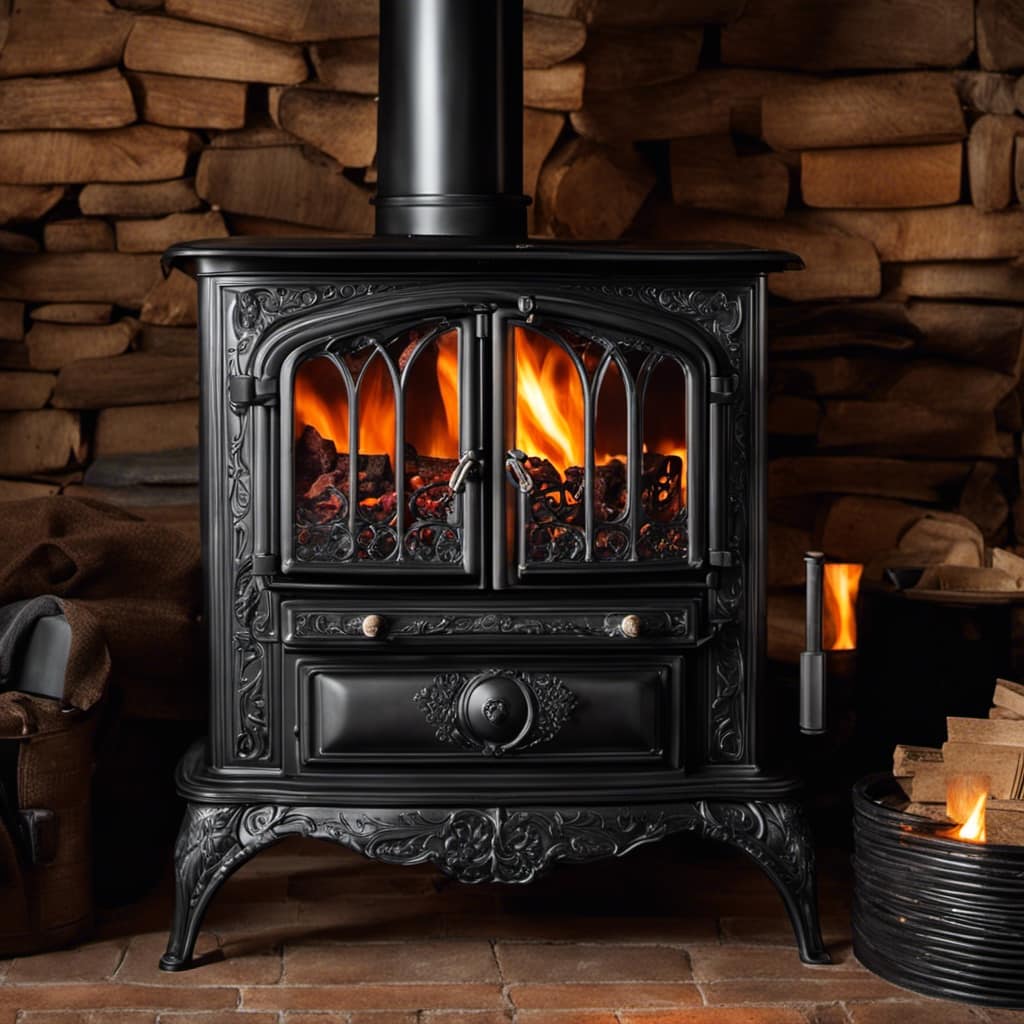
To start, I recommend using a wire brush or sandpaper to scrub away any loose rust flakes. Be sure to wear protective gloves and a mask to prevent inhaling any particles.
Once the loose rust is removed, you can apply a rust remover solution to the affected areas. Follow the instructions on the product carefully and allow it to sit for the recommended time. Afterward, use a clean cloth or brush to wipe away the rust residue.
Applying the Polish to the Wood Stove
After removing any rust and cleaning the surface, I can begin applying the polish to give the stove a beautiful shine.
When it comes to applying the polish, there are a few techniques to keep in mind:
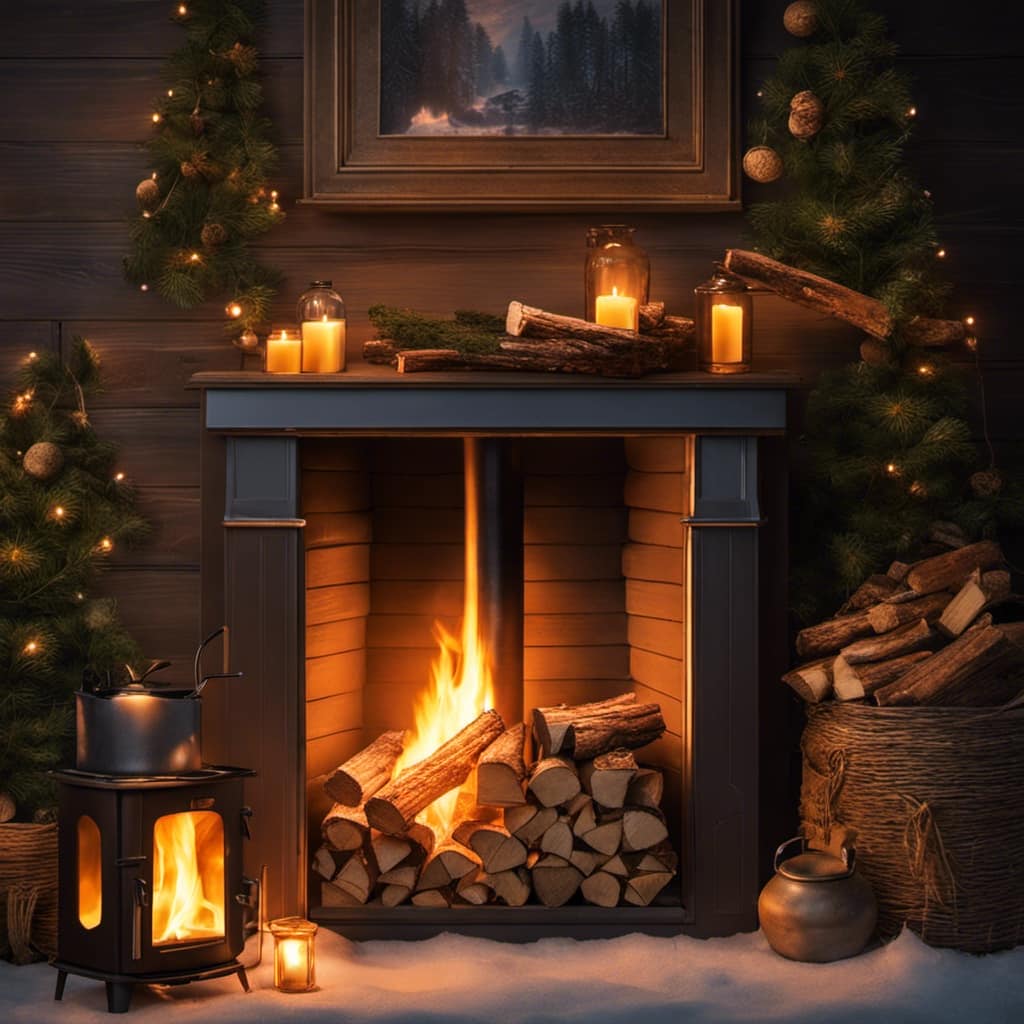
-
Start with a small amount: It’s best to start with a small amount of polish and gradually add more if needed. This will prevent any excess polish from building up and creating a sticky residue.
-
Use a soft cloth: A soft cloth, such as microfiber or cotton, is ideal for applying the polish. This will help to evenly distribute the polish and avoid any scratches or marks on the surface of the stove.
-
Work in small sections: To ensure thorough coverage, it’s best to work in small sections at a time. This will allow you to focus on one area and ensure that the polish is applied evenly.
Choosing the right polish is also important. Look for a polish specifically designed for wood stoves, as it will provide the best results and protection for your stove.
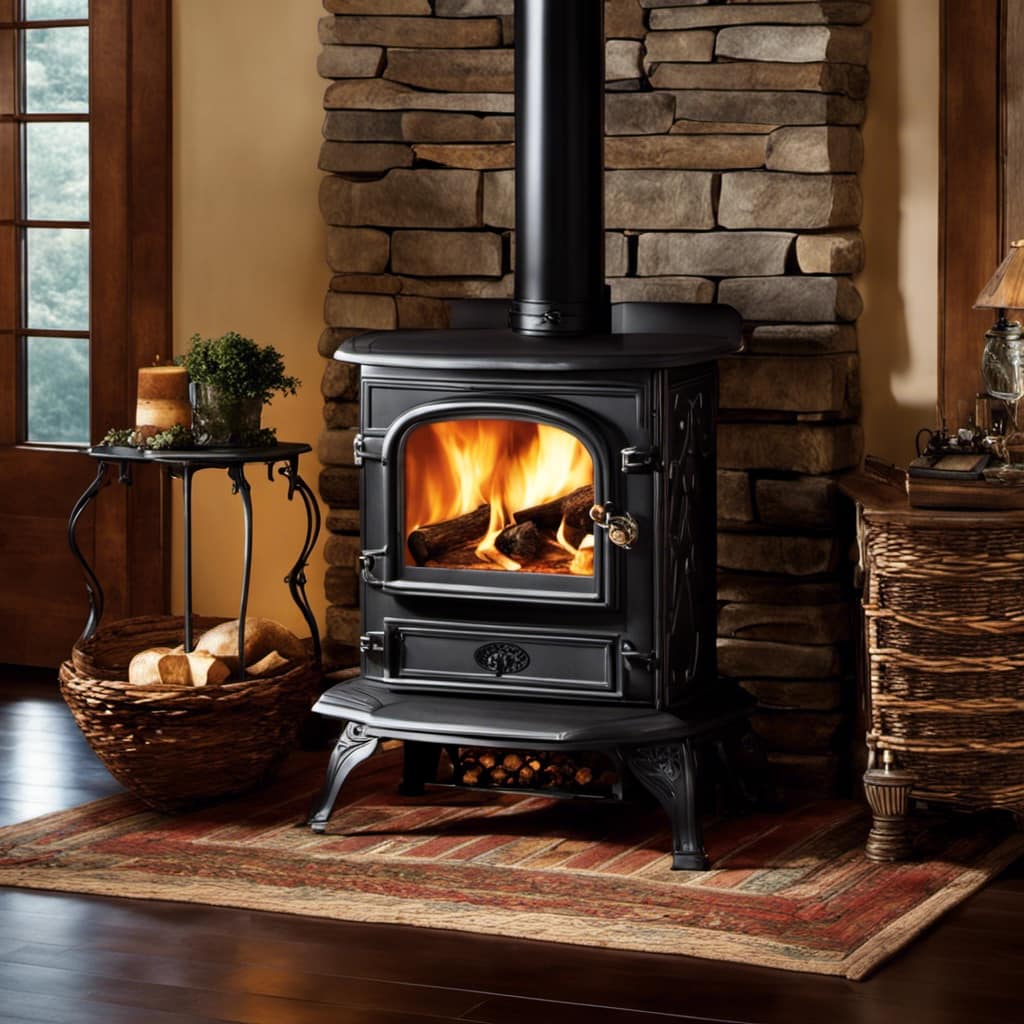
Maintaining the Polished Wood Stove
Maintaining the shine on my wood stove is crucial to keeping it looking beautiful and protecting it from damage. After all the effort I put into polishing it, I want to ensure it remains in pristine condition for as long as possible. To achieve this, I follow specific cleaning techniques and take necessary precautions to prevent rust.
When it comes to cleaning, I use a soft cloth or brush to remove any dust or debris from the surface of the stove. I avoid using abrasive cleaners or scrub brushes as they can scratch the finish. Instead, I opt for mild soap and water solution or a specialized wood stove cleaner. These products effectively remove grease and stains without causing any harm.
To prevent rust, I make sure to keep the stove dry at all times. Moisture is the enemy of a polished wood stove, as it can lead to corrosion. I regularly inspect the stove for any signs of water or condensation and promptly address them. Additionally, I apply a thin layer of protective wax or polish to create a barrier against moisture and oxidation.
In conclusion, maintaining the polished appearance of my wood stove is a labor of love. By following proper cleaning techniques and preventing rust, I can enjoy the beauty of my stove for years to come.
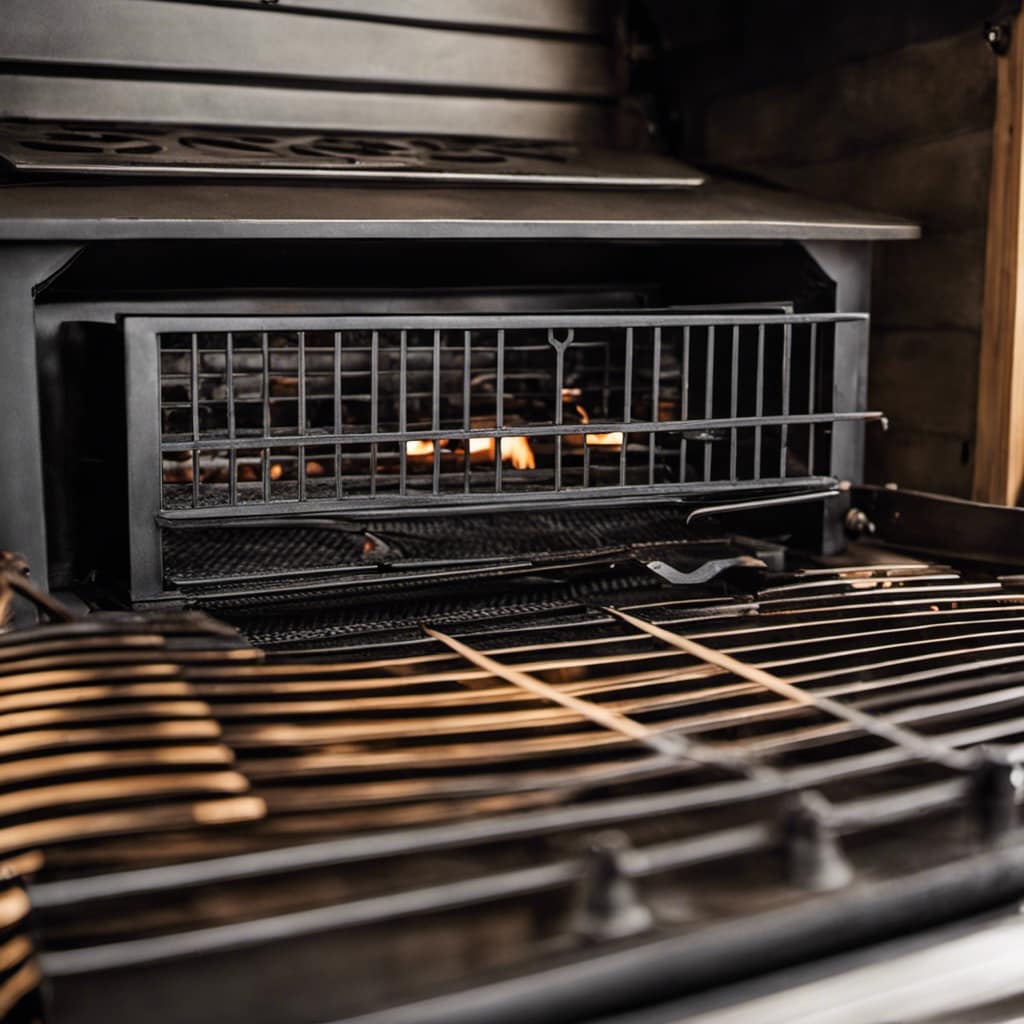
| Cleaning Techniques | Preventing Rust |
|---|---|
| Use soft cloth or brush to remove dust and debris | Keep the stove dry at all times |
| Avoid abrasive cleaners or scrub brushes | Inspect for signs of water or condensation |
| Use mild soap and water solution or specialized cleaner | Apply a thin layer of protective wax or polish |
Frequently Asked Questions
Can I Use Regular Household Polish to Polish My Wood Stove?
I wouldn’t recommend using regular household polish to polish a wood stove. While it may be effective for other surfaces, it may not withstand the high temperatures of a wood stove. There are alternative wood stove polishes available specifically designed for this purpose.
How Often Should I Polish My Wood Stove?
I find it important to know how often to clean a wood stove and what the best polish is. Regular maintenance is key to keep it looking good and running efficiently.
Is It Necessary to Remove All the Ashes Before Polishing the Wood Stove?
It is necessary to remove all the ashes before polishing the wood stove. This ensures a clean surface and prevents any debris from interfering with the polishing process. Polishing a wood stove provides numerous benefits, including enhancing its appearance and protecting the surface from rust and corrosion.
Can I Use a Cloth or Do I Need a Specific Type of Applicator to Apply the Polish?
I can use either a cloth or a specific type of applicator for the best polish application on my wood stove. It’s important to choose the right tool to ensure a smooth and even finish.

Can I Use the Same Polish on the Outside and Inside of the Wood Stove?
I wouldn’t recommend using the same polish for both the inside and outside of the wood stove. Different polishes are designed for specific surfaces. It’s important to choose the right one for each area to achieve optimal results.
Conclusion
As the final step in the process, maintaining the polished wood stove is crucial to ensure its longevity and continued aesthetic appeal.
Just like any other valuable possession, regular cleaning and upkeep will keep your wood stove looking its best. Remember to use the appropriate cleaning products and techniques to avoid damaging the surface.
With proper care, your polished wood stove will continue to be a source of warmth and beauty in your home for years to come.
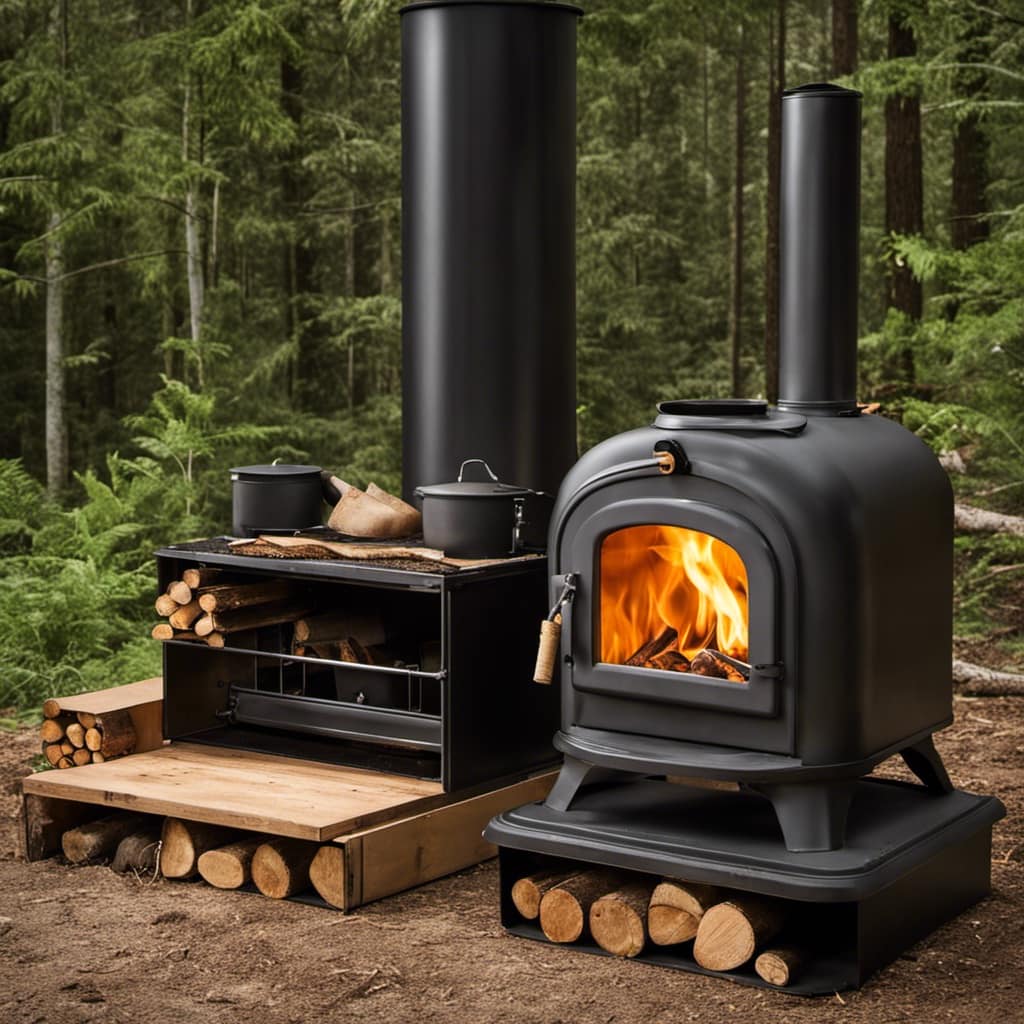
Growing up surrounded by the vast beauty of nature, Sierra was always drawn to the call of the wild. While others sought the comfort of the familiar, she ventured out, embracing the unpredictable and finding stories in the heartbeat of nature.
At the epicenter of every remarkable venture lies a dynamic team—a fusion of diverse talents, visions, and passions. The essence of Best Small Wood Stoves is crafted and refined by such a trio: Sierra, Logan, and Terra. Their collective expertise has transformed the platform into a leading authority on small wood stoves, radiating warmth and knowledge in equal measure.






